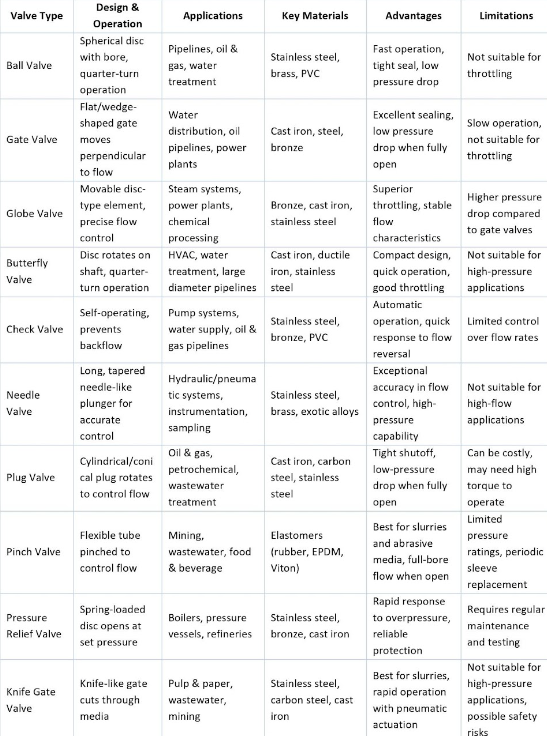Are you having difficulty deciding which valve to choose for your piping setup?
Choosing the right one can be challenging due to various types of valves available in the market.
In this guide, we will talk about the 10 common types of valves focusing on their design, operation, and applications. We will also introduce the advantages and limitations of each valve. This guide will provide you with a detailed overview of informed decision-making.
Let’s get started!
10 Common Types of Valves and Their Uses
Now that you have understood the basic categories and functions of valves it is time for you to learn about the various types of valves and their uses. This knowledge is useful as it provides the information that will assist you to make the right choice of the valve that you require.
Ball Valves
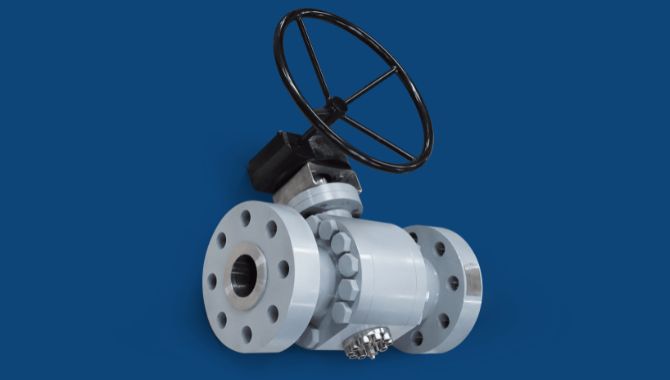
- Design and Operation:
Ball valves consist of a spherical body with a round hole through its center. This ball is located within a chamber which controls the flow by aligning or plugging the bore with the ports of the valve’s inlet and outlet. This occurs when the bore aligns with the ports. It ceases at the point that is perpendicular. The operation of the valve is a quarter turn which enables the valve to open and close quickly. It is thus ideal for on/off applications.
- Material:
Ball valves are generally constructed from stainless steel or brass. Stainless steel is one of the most durable materials that do not corrode easily and is ideal for harsh conditions. Brass is tough and offers the conduction properties.
- Applications:
You will find ball valves used in pipelines, water treatment facilities, and oil and gas sectors. Their quick off time makes them suitable to be used in cases where there is the need to stop the flow of water quickly.
- Advantages and Limitations:
Ball valves offer tight sealing and low pressure losses. They are most effective when they work under a lot of pressure and or heat. However, their design has a problem in that flow control is difficult to achieve accurately. It restrains their efficiency in throttling applications.
Gate Valves
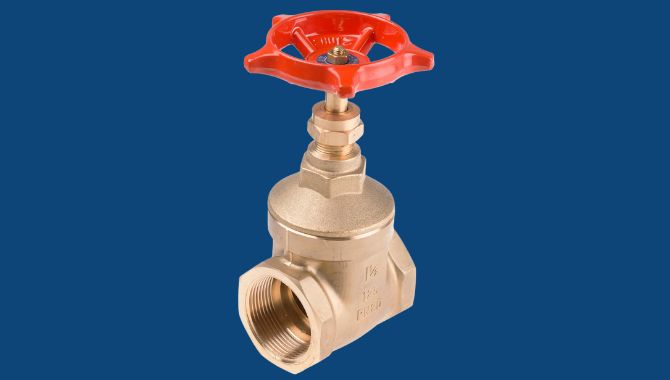
- Design and Operation:
Gate valves are designed with a plate or ‘gate’ that is positioned to the flow path either parallel to the flow or at right angles to it. When fully opened the gate withdraws into the valve bonnet and this allows full flow. The closure occur at the gate where the flow path is blocked by the gate coming down. This design allows it to have a very tight seal when shut and also can have a very low flow restriction when it is opened.
- Materials:
Gate valves are available in different materials such as bronze and cast iron. Cast iron is also long lasting and rather efficient for use in low pressure systems. Bronze valves do not rust and can be used where the valves are exposed to water especially in marine conditions.
- Applications:
Gate valves are ideal for applications where complete flow shut off is necessary such as in power plants and water systems. Their full bore design enables low pressure drop and is suitable for installation in pipeline cleaning tools.
- Advantages and Limitations:
These valves give good sealing and low pressure drop when fully open. Still, they are not ideal for throttling because of the gate vibrations and wearing. They also take longer to open/close than quarter turn valves.
Globe Valves
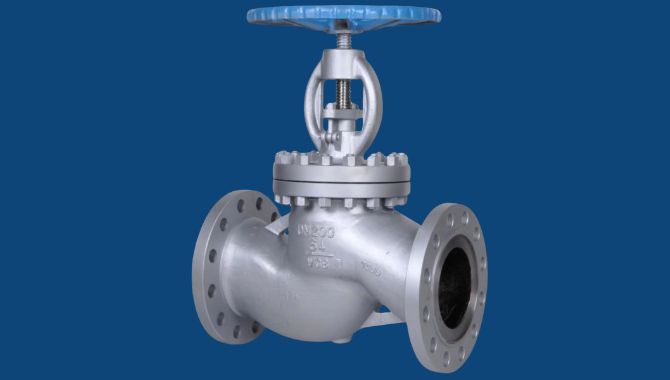
- Design and Operation:
Globe valves have a movable round disc-type element and a fixed ring seat inside a spherical body. The disc moves up and down at 90 degrees to the seat which allows precise flow control. The stem moves the disc closer to or away from the seat when you turn the handwheel and regulates flow very accurately. This design gives excellent throttling ability.
- Material:
Globe valves are typically made of stainless steel or cast iron. Cast iron provides efficiency and durability for general applications. Stainless steel globe valves work well in corrosive conditions and high temperatures.
- Applications:
You will see globe valves in systems needing accurate flow control like power plants, steam systems and chemical processing facilities. Their stable flow traits make them perfect for regulating flow rates and pressures.
- Advantages and Limitations:
Globe valves allow high throttling and maintain tight shutoff. The different globe valve parts work together to give great control but they add more pressure loss than gate valves because of their flow path. The frequent contact between the disc and seat can increase wear over time.
Butterfly Valve
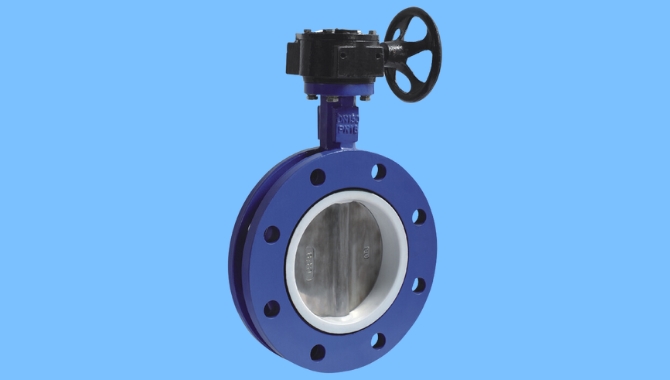
- Design and Operation:
Butterfly valves have a round disc on a rotating shaft. When you turn the actuator the disc rotates 0 to 90 degrees. At 0 degrees, the disc blocks flow fully since it’s perpendicular. At 90 degrees, it’s parallel and allows full flow. This simple design is equipped with precise flow control and fast operation.
- Materials
Butterfly valves usually use stainless steel or ductile iron. The disc often has a resilient elastomer coating to improve sealing. Ductile iron gives higher strength for moderate pressures. Stainless steel works well in corrosive settings and at high-temperature applications.
- Applications:
You will see butterfly valves widely used in HVAC systems, large pipelines and water treatment plants. Their compact design makes them ideal for applications where space is limited. In oil and gas industry, they are often in low-pressure refinery sections.
- Advantages and Limitations:
Butterfly valves offer quick operation, low maintenance requirements and lightweight design. The Butterfly valve parts work together to provide good throttling capabilities and handle high flow rates. However, they may not suit high pressure applications or abrasive fluids systems as these can damage the disc seal over time.
Check Valves
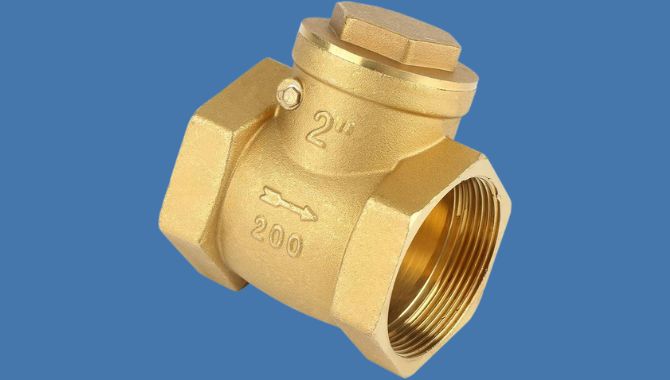
- Design and Operation:
Check valves are automatic valves used to prevent reverse flow in a pipeline. Most of them have a part that can be shifted (ball, disc or piston) which is opened when the desired flow direction is present and closed when the flow direction is the opposite. The closing mechanism more often assists in the use of spring force, gravity or reverse flow pressure. The Back check valve is one type that employs this approach to fully block the flow in the opposite direction.
- Material:
The check valves are available in different materials including stainless steel and polyyurethane (PVC). Stainless steel is a very durable and does not corrode easily which is very useful in high pressure applications. PVC check valves are quite cheap and suitable for use in chemical processing industries.
- Applications:
Check valves are required in pump systems which do not allow back flow when the pump is switched off. They are commonly used in oil and gas pipelines, water supply systems, and HVAC systems. In boiler feed systems check valves are used to prevent the water hammer effects.
- Advantages and Limitations:
These valves operate on their own without the need for an external power source. They are quick to act to flow reversal which minimize back flow. But control of flow rates is rather restricted when using check valves and they may make noise or vibrate depending on the circumstances.
Needle Valves
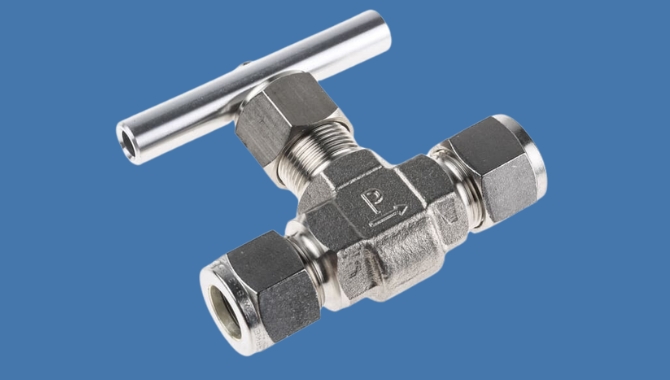
- Design and Operation:
Needle valves have a long and tapered point on a needle-like plunger. This design lets you precisely adjust flow control as you turn the valve stem. The needle moves in/out of a small hole and provides fine control of flow rates. The tapered design makes a large pressure drop which reduces flow effectively.
- Material:
You will usually find needle valves made of exotic alloys or brass. Brass is good for machining and often used for less demanding environments. Alloys like Monel or Hastelloy work for highly corrosive or high-temperature applications.
- Applications:
Needle valves are perfect when you need precise flow control in small pipes. They are often used in pneumatic and hydraulic systems, instrumentation and lab equipment. The Hydraulic needle valve is important for controlling chemical injection rates and sampling systems in oil/gas industry.
- Advantages and Limitations:
These valves offer great accuracy with some adjusting flows as low as 1 mL/min. They provide tight shutoff and can handle high pressures. However, they are not good for high-flow applications due to their restrictive design.
Plug Valves
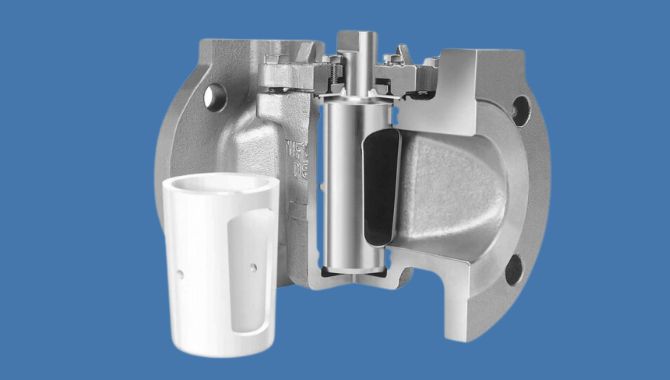
- Design and Operation:
Plug valves have a tapered or cylindrical plug with a hole that rotates inside the valve body. The plug rotates 90 degrees to align or misalign the hole with the inlet and outlet ports to control flow. This design lets open/close quickly with a quarter-turn operation and seal excellently. Typical hole sizes go from 0.5 inches to 24 inches with bigger custom sizes available for particular applications.
- Material:
You will see plug valves made from various materials like stainless steel and carbon steel. Carbon steel handles moderate to high pressures with 36,000 psi yield strength. Stainless steel, especially grade 316, is great for corrosive settings with its 16-18% chromium.
- Applications:
Plug valves are highly used in oil/gas industry which handles up to 15,000 psi. They are common in petrochemical plants, pipelines and refineries. Their ability to handle slurries and viscous fluids up to 100,000 cP makes them perfect for wastewater plant treatment.
- Advantages and Limitations:
These valves provide a seal with leakage rates as low as 0.1 mL per minute per inch of valve size. They have low pressure drop when fully open and flow coefficients (Cv) from 10 to 30,000 depending on size. However, plug valves can be pricey with 24-inch sizes potentially costing over $15,000.
Pinch Valves
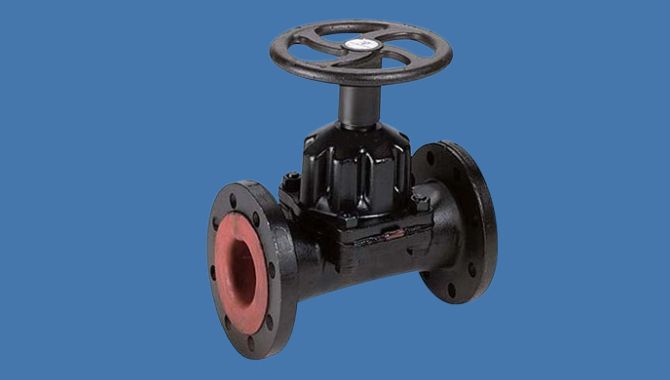
- Design and Operation:
Pinch valves have a flexible tube inside a valve body. They work by “pinching” the tube using rollers, bars or a pneumatic actuator. The tube gradually closes to restrict flow when squeezed shut. Full closure happens when the tube is completely pinched off. This simple design allows accurate flow control and full flow when open. The common types of this design are air-operated pinch valve, manual pinch valve and electric pinch valves.
- Materials:
The flexible tube is important and usually made of elastic polymers like Viton or natural rubber. Viton handles temperatures up to 200°C and resists many chemicals with its fluoroelastomer composition. Natural rubber is durable with tensile strength of 20-30 MPa.
- Applications:
Pinch valves are great for slurries and liquids with solids. You will find them in mining operations who use them to handle abrasive slurries with particle sizes up to 50mm. In wastewater treatment plants, they handle flows up to 5,000 GPM. The food and beverage industry uses pinch valves for their clean design per FDA requirements.
- Advantages and Limitations:
These valves have great throttling ability with Cv values from 15 to 11,000 depending on size. They provide bubble-tight shutoff and handle pressures up to 300 psi. However, pressure ratings may be lower than other valves in pinch valves. The rubber sleeve needs periodic replacement usually after every 500,000 to 1 million cycles depending on the application.
Knife Gate Valves
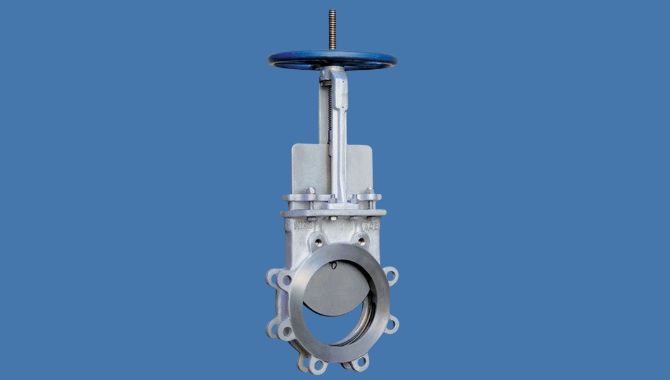
- Design and Operation:
Knife gate valves have a flat and knife-like gate that slides into the flow to control or stop it. The gate is usually 3-25 mm thick and moves perpendicular to the flow. Pneumatic knife gate valves use compressed air (60-120 psi) to activate and allow rapid operation. The knife edge cuts through solids which certify tight shutoff. Stroke lengths range from 2 to 60 inches depend on valve size.
- Material:
These valves are usually made from carbon steel. Carbon steel gives longevity with a tensile strength of 60,000 psi. The knife edge is frequently hardened to 400-500 Brinell for better wear resistance.
- Applications:
You will see knife gate valves in paper mills and pulp which handle slurries with up to 50% solids. In wastewater treatment, they handle flows up to 100,000 GPM. Mining operations use them for abrasive slurries with particles up to 6 inches wide. Pneumatic knife gates are great for automated systems with cycle times as low as 2 seconds.
- Advantages and Limitations:
These valves offer good shutoff with leakage rates as low as 0.1 mL/min/inch of seat diameter. They handle pressures up to 740 psi and temperatures to 1000°F. However, they may not suit high-pressure applications. The exposed gate can risk safety in some environments that require protective measures.
Pressure Relief Valves
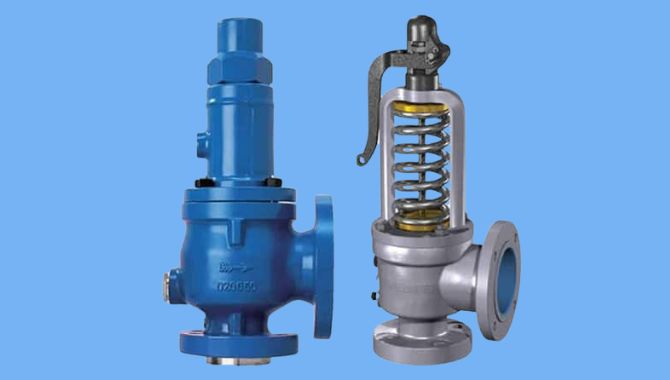
- Design and Operation:
Pressure relief valves are safety devices meant to protect systems from overpressure. They have a spring-loaded disc held against a seat. When system pressure is higher than the spring force, the disc lifts to let fluid escape to reduce pressure. The valve reseats once pressure drops below the set point. Normal set pressures range from 5 to 6,000 psi with some specialized valves reaching 30,000 psi.
- Materials:
These valves normally use bronze or stainless steel. Bronze offers good heat conductivity for steam applications up to 550°F. Stainless steel mainly grade 316, resists corrosion well and has 75,000 psi tensile strength.
- Applications:
You will find pressure relief valves in boilers that protect against over 3-6% of ASME code limits. In pressure vessels, they prevent over 10% of max allowable working pressure. Refineries use them to protect process equipment with valve sizes ranging from 1/2 to 12-inch sizes. The hydraulic pressure relief valve is important in hydraulic systems to avert equipment damage from high pressure.
- Advantages and Limitations:
These valves react fast, normally opening within 5 milliseconds of overpressure. They reliably protect with ASME-certified valves guaranteed to open within 3% of set pressure. However, they need regular yearly maintenance and testing to make sure they work properly.
Comparison Table
Conclusion
Choosing the right valve is critical to the system reliability and efficiency. All of them have some special features, for example, ball valves are characterized by fast opening, while globe valves provide accurate control. It is, however, advised to consider certain definite requirements of your application in your decisions including pressure, flow characteristics and temperature.
Looking for assistance with valve selection for your system? Get in touch with us and get a broad variety of valves of superior quality and professional advice.
Frequently Asked Questions
What is the primary difference between gate and globe valves?
The only major distinction between gate valve and globe valve is that gate valves are used for on/off control with low pressure loss, while globe valves are suitable for flow control and throttling with high pressure loss. Gate valves are less complex and are of the double seating type while globe valves are more complex and are only used in one direction.
How to check the valve quality?
Valve design testing ensures that valves are safe, perform well and are reliable through a rigorous testing process.
What is valve type testing?
Valve type testing is a process of examination of the valve type to ensure that it has been constructed to required standards of reliability, performance and safety.



